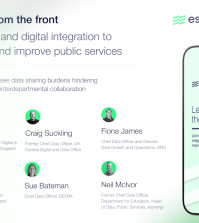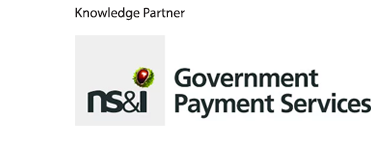The transformation imperative: why – and how – digital technology leads to better government

With increasing pressures facing the public sector, it is vital that organisations make the most of technology to drive better, more effective services. With 50 years combined public sector experience, David Dinsdale and Khadam Rafique from SAP set out how public sector organisations can use technologies like artificial intelligence, systems integration and process modelling to become more productive and responsive
Public services underpin our entire society. They provide the foundations that we rely on to live and thrive – safety, security, health, education and fairness. The unprecedented demands of a modern world, enhanced demand for services and reducing budgets in real terms places public servants under pressure to deliver – particularly when, as David Dinsdale, industry value advisor at SAP highlights, in many areas only the state can provide these services.
“The public sector is unique in many areas as sole provider of services we rely on,” he says.

“There are a lot of public sector organisations that have a specific purpose, and there’s only one of those organisations that fulfils that purpose in a particular country,” he adds. “I think the approach to transformation for these organisations is different, because you may not have the templates, the accelerators, the best practices, and therefore you have to have a deeper level of understanding of the processes to successfully transform.”
Khadam, SAP’s Business Development and Growth Director of public sector, notes another key difference in approach in the public sector versus the private sector: risk appetite. “As the government runs critical national infrastructure, it can often take a low-risk approach to digital transformation. The challenge with this approach is that this tends to leave high levels of legacy technology, which can hinder the response when a crisis such as the coronavirus pandemic strikes.”
“Sometimes public sector processes are set out in legislation – which is slow to change and doesn’t keep pace with better ways of working that technological changes make possible,” David says.
Taken together, it means transformation in public sector can be more difficult, compounded by the fact that government systems more broadly have often struggled to keep pace with best practice.
Managing complexity
Despite this complexity, the transformation imperative remains strong in the public sector. Technology can already help government become more efficient and in the years ahead, artificial intelligence will super-charge this.
A key example is systems integration, which is the process of connecting multiple different systems into a single larger system to help drive better coordination of delivery for users. David says it is crucial area when understanding the structure of the public sector.
A council in England, for example, has a wide range of services they deliver – in some cases as many as 600, ranging from archaeology all the way through to social care and education. Many other parts of the public sector have a similarly broad range of services to deliver. It is vital that these different services – and the data that lies behind them – are able to communicate.
“These are complex organisations that deliver an array of services, so that typically means they have more legacy and line of business applications than organisations in the private sector,” David says. “And so having a very strong integration is really important.”
Better integration is an area where artificial intelligence can be deployed, particularly for functions such as data matching.
He explains: “You have David Dinsdale in system A and David Dinsdale in system B, but how do you know that they are the same person? That kind of data matching – whether it relates to people, to financial transactions, to entities, to risk modelling and a whole range of other applications – is perfect for AI. The models that fulfil this function are typically very mature.”
Artificial intelligence is already being deployed in such tasks. An example is when SAP helped one government develop a solution to support businesses in the creative industries that were affected by the COVID pandemic. Software helped the government put together a system to allow these businesses to apply for grants while technology helped check that applications were legitimate by verifying expenses in scanned receipts matched claims for support.
“That was a perfect example of where the core application components – the ability to create a submission and upload a document – was blended with artificial intelligence components to assess financial risk and evidence,” says David.
Hundreds of thousands of applications were made this way, with some having as many as 500 supporting attachments. “Artificial intelligence was used to identify applications that were risky in order to make sure that the money got to the people as quickly as possible without having a massive overhead on manual checking of 500 different utility bills or bank statements every time someone submitted a claim for support.”
Adding value with AI
Such use cases in the pandemic helped public service organisations realise the necessity of integration and digitisation of government systems.
Government departments and organisations now better understand the imperative – and have the appetite – for transformation, says Khadam, and David agrees. “Organisations with newer technology were able to respond substantially quicker and substantially better to the needs that arose during COVID than the organisations that were working on older legacy technology,” he says. “Newer technologies and approaches just allow for a different order of magnitude of response for organisations that are more up to date.”
Indeed, David says that AI capability has developed at such a pace that “AI could and should have a role in every process” that a public sector organisation has.
“The question that the public sector could and should be asking is: where can we insert AI into that process in a way that benefits us, and obviously organisations like SAP play a key role in that in helping make public sector organisations aware of both the art of the possible, and the guardrails.”
SAP uses guardrails based on ‘the three Rs’ for its use of AI.
AI should be relevant, reliable and responsible: relevant (embedded into a specific business process with pre-defined parameters); reliable (applied in a specific context, so no room for hallucinations or AI making up an answer); and responsible (reflects operational procedures and adheres to compliance definitions, such as GDPR and privacy laws).
David acknowledges that reliability of AI processing is a concern, particularly with emerging uses like generative AI. He says, “if we look at AI that already exists, there are a lot of really good use cases where AI is incredible – and incredibly reliable.” Alongside data matching, AI can also help with tasks such as sentiment analysis of communications – which could be helpful in analysing consultation responses – as well as in document summarisation and behavioural insights.
“So I think as public sector organisations look to deploy AI, it’s building on the areas where AI is good, and then thinking more deeply about the areas where AI struggles,” David says.
Getting a grip on processes
Areas where AI works less well can include helping to filter job applications, where there is risk that any biases or imbalances can be perpetuated. One private sector company wanted to use AI in its recruiting process, David says, so they created their own AI model and uploaded staff CVs to help the model identify the key skills potential employees would need. The problem was that this organisation’s employees were predominantly male, so the AI bot was naturally biased towards males and started excluding females based on the criteria of their CVs. This is a challenge that people can avoid by using in-built AI features from their software partners. SAP includes features that avoid bias in CV processing and can also review content for bias, for example checking email templates and job descriptions.
“I think that’s a perfect example of, where when you’re deploying the underlying models, you have to be very careful about the unexpected consequences,” David says.

Khadam says this demonstrates that AI is only as good as the data it uses.
“AI is not there to replace us all, it’s to assist in making decisions – which would often require a lot of manual intervention – in a more automated, more consistent and more effective way. People will be then better focused at providing added-value services to end users.”
Process modelling is also being adopted in public sector organisations. Often, just as in many businesses, there will be business process guides – information on how a task should be done, and the steps that should be undertaken to achieve it.
Such processes are vital in the public sector, where accountability is essential, but the problem is, David says, that many organisations have no real idea whether systems are working in the way that they should.
David explains how process modelling helps: “We will look at how a process is design to run in theory, and then we’ll run our process modelling software on your system to let your system data tell us how your processes are working in practice. This will show all the variants and workarounds that people use.”
This comparison reveals how government organisations work in reality, he says. “Process design software is able to surface in a visual way how a process should work, and how it is actually working highlighting blockers, inefficiencies, workarounds and potential breaches of governance.”
A number of different responses can flow from this. The supposed best practice guide can be updated if more efficient ways have been found, blockages that stop processes following the desired paths can be tackled, or crucial governance steps can be reiterated and improved.
SAP’s software builds in best practice process modelling, Khadam adds, which is based on significant research and understanding of business best practice. The products also have embedded dashboards which give contract managers and business process owners visibility about how many processes have gone through the best practice path, and how many have had delays, and why.
Again, the pandemic helped stressed the importance of this work. Organisations were best placed to respond at pace if they knew which parts of their processes could be streamlined, conducted in parallel, or postponed – or those which were truly mission critical.
SAP is seeing high levels of interest from public sector customers in AI and process mining.
“The public sector imperatives are to become leaner, to become more effective, to become more innovative, and to deploy innovation at scale and pace – and the benefits go to these organisations. It’s a circular economy,” Khadam concludes.
To learn more about how why and how digital technology leads to better government, please contact David Dinsdale, Industry Value Advisor, SAP ([email protected]) or Khadam Rafique, Shared Services Strategy and Growth Director, SAP ([email protected]) or visit the website Government software | SAP.
David spoke at a recent webinar on how governments are using AI to become more efficient. Watch the recording on demand here.
Join SAP in person on 19th September at Public Service Data Live at the Business Design Centre in London, to discover how to optimize the use of data and AI in public service delivery. SAP will be featured at booth number 2 and will present on the Impact Stage at 10:40 am.
















